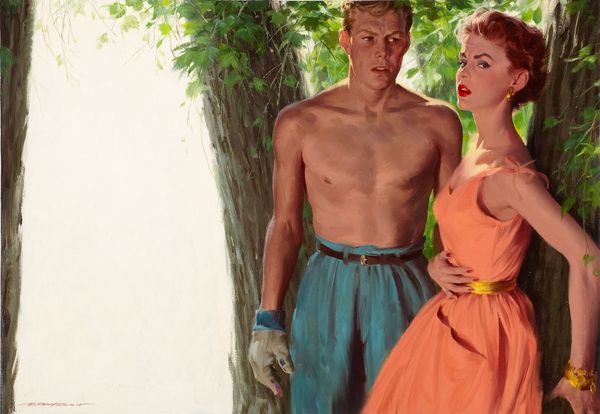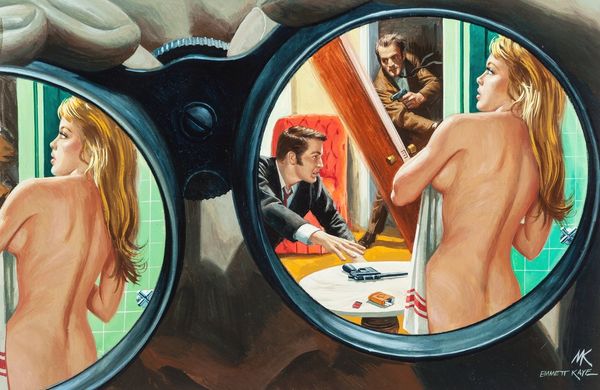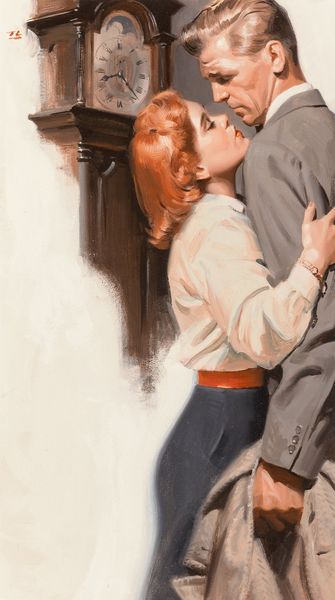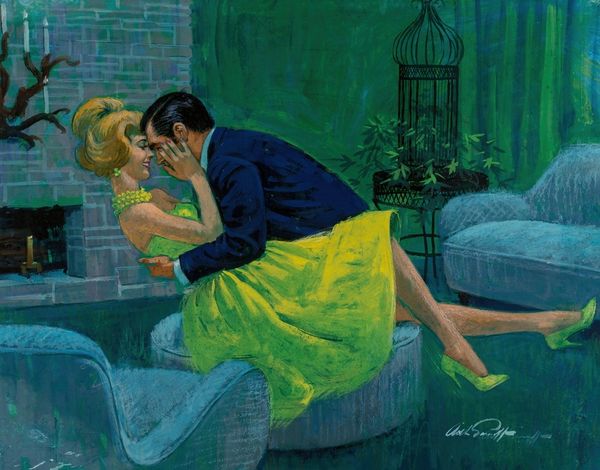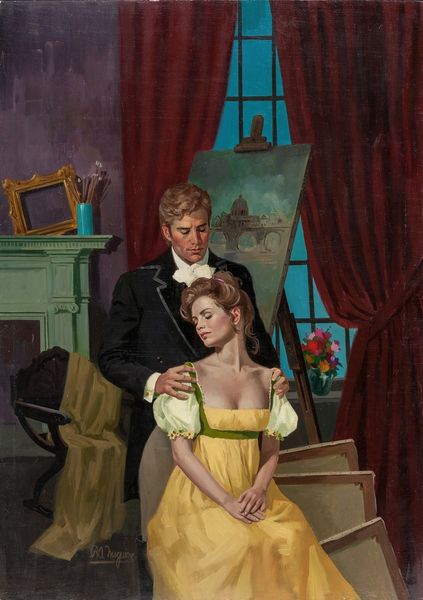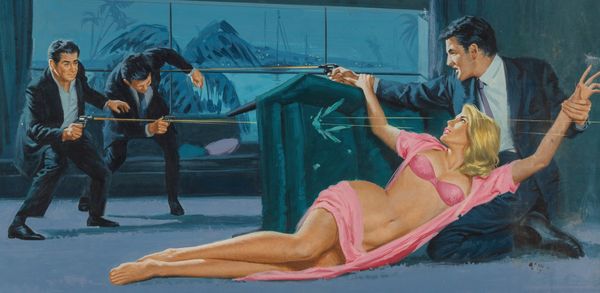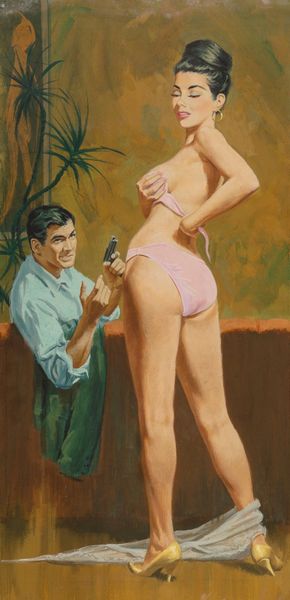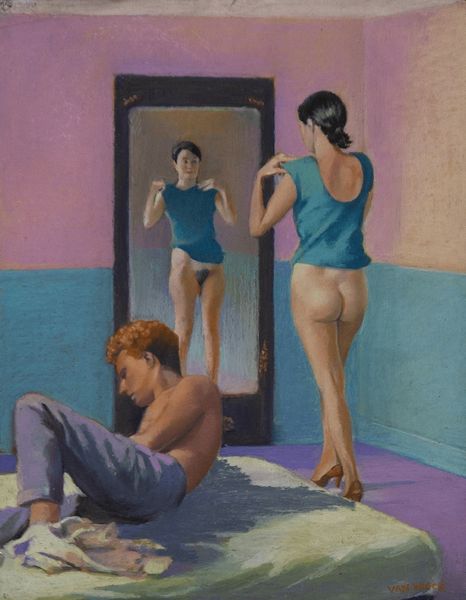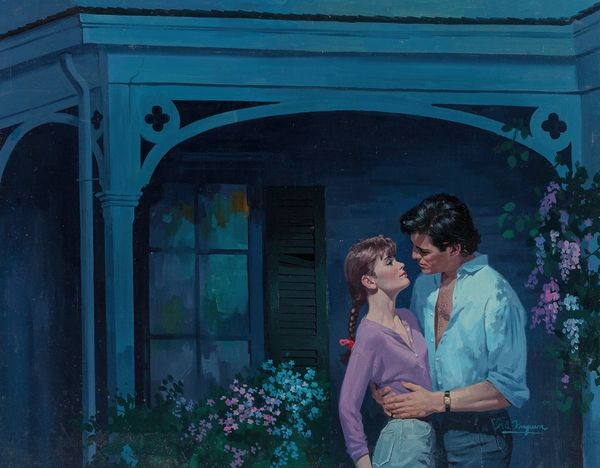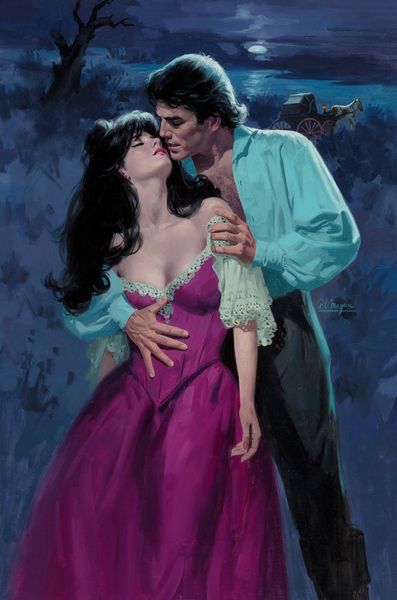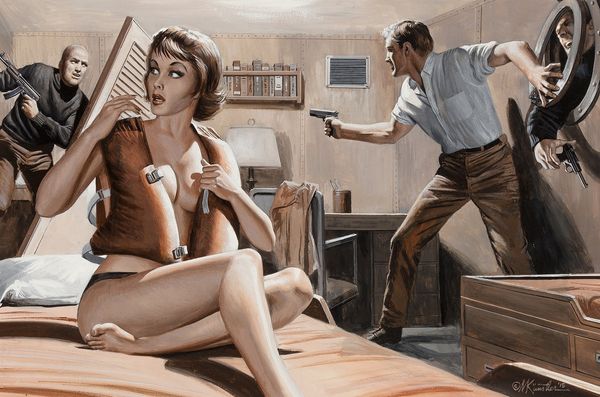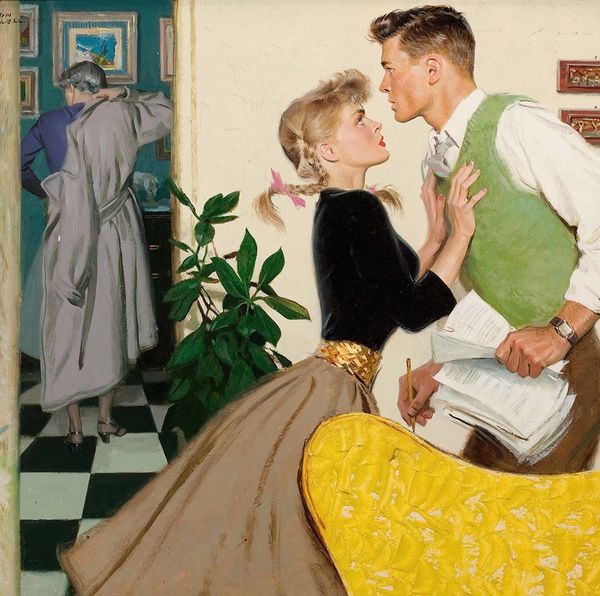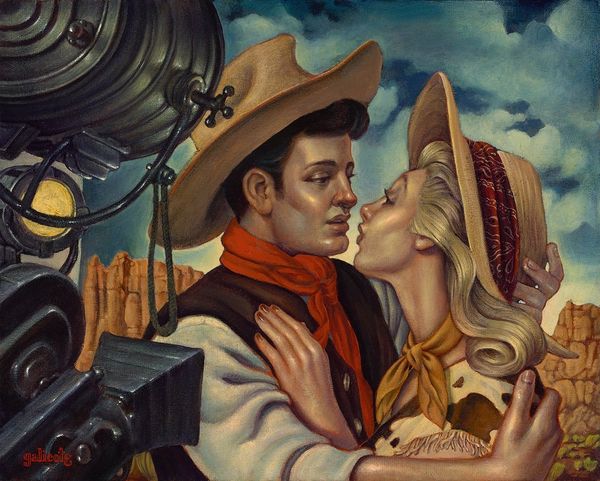
Copyright: Modern Artists: Artvee
Curator: Well, this certainly catches the eye! Looking at “Fighting for the Affair,” a paperback cover painted by Mort Künstler in 1953, the melodramatic tension just leaps out. The classic love triangle presented with such... intensity. Editor: The first impression I get is… sticky. Like cheap romance novels smell and feel, combined with stale beer. It's claustrophobic, almost garish, but utterly compelling. You just know there will be a price to pay for all that passion. Curator: The imagery speaks volumes. The boxer, locked in a passionate embrace, dominates the foreground – a symbol of raw power and physical desire. And then there's the betrayed man in the doorway, the cuckolded husband, with a face etched with… well, not exactly surprise. Disappointment, perhaps? Editor: Exactly! And consider the boxer's bandages and shorts paired with her red dress. We are clearly meant to focus on their bodies, on the visceral, animalistic attraction. While the suit is drab. Notice too the strategically placed boxing glove. Defeated but also a harbinger of violence. A heavy, inert weight, as are the choices, presumably. This reflects anxieties circulating at mid-century regarding marriage, masculinity, and shifting social norms. Pulp was surprisingly attuned to the cultural pulse. Curator: The choice of oil paint further underscores this clash of high and low. The romanticized style contrasts intriguingly with the somewhat sordid scene. It is all very "erotic-art". Editor: But look closer! Künstler uses very quick brushstrokes and contrasts a bright almost gaudy coloring for the boxer and the blonde with almost monotone colors for the forlorn husband, to put more weight in one corner than in the other. But that makes him almost ghostly; like a revenant of what life could have been? This reflects changing moral codes too: marital conventions being, for some, a "ghost" of what was once compulsory. Curator: Absolutely. The entire image drips with foreboding and hints at societal unease. And Künstler captures that undercurrent with such vibrant symbolism. Editor: Considering this was meant to sell pulp fiction, it’s surprisingly astute in its social commentary and coded language. I imagine, then as now, most saw merely the sensational. Curator: But it’s in precisely this collision of romance and reality that its cultural significance lies. Editor: I agree. A dark yet fascinating lens through which to consider American anxieties of the 1950s.
Comments
No comments
Be the first to comment and join the conversation on the ultimate creative platform.
